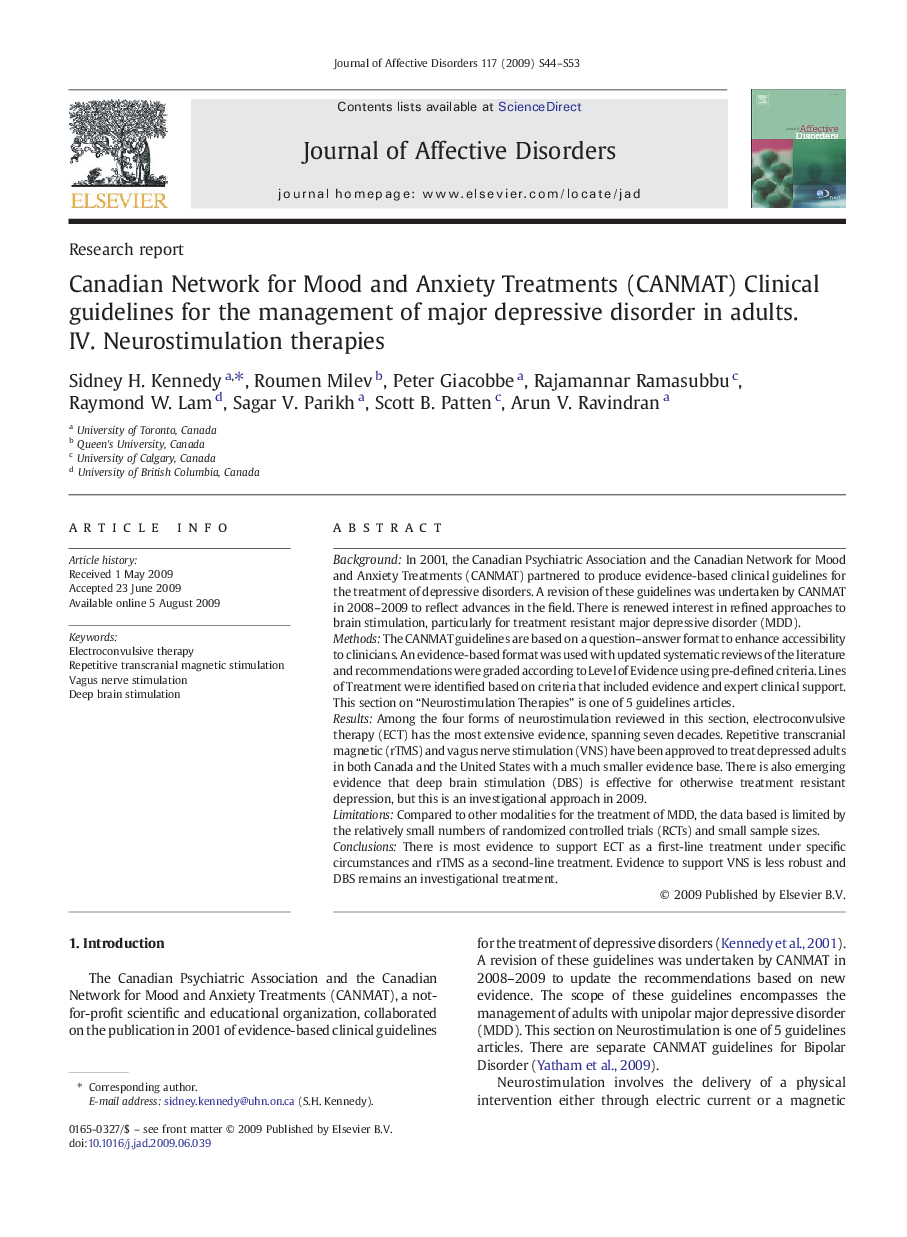| کد مقاله | کد نشریه | سال انتشار | مقاله انگلیسی | نسخه تمام متن |
|---|---|---|---|---|
| 4187292 | 1277628 | 2009 | 10 صفحه PDF | دانلود رایگان |

BackgroundIn 2001, the Canadian Psychiatric Association and the Canadian Network for Mood and Anxiety Treatments (CANMAT) partnered to produce evidence-based clinical guidelines for the treatment of depressive disorders. A revision of these guidelines was undertaken by CANMAT in 2008–2009 to reflect advances in the field. There is renewed interest in refined approaches to brain stimulation, particularly for treatment resistant major depressive disorder (MDD).MethodsThe CANMAT guidelines are based on a question–answer format to enhance accessibility to clinicians. An evidence-based format was used with updated systematic reviews of the literature and recommendations were graded according to Level of Evidence using pre-defined criteria. Lines of Treatment were identified based on criteria that included evidence and expert clinical support. This section on “Neurostimulation Therapies” is one of 5 guidelines articles.ResultsAmong the four forms of neurostimulation reviewed in this section, electroconvulsive therapy (ECT) has the most extensive evidence, spanning seven decades. Repetitive transcranial magnetic (rTMS) and vagus nerve stimulation (VNS) have been approved to treat depressed adults in both Canada and the United States with a much smaller evidence base. There is also emerging evidence that deep brain stimulation (DBS) is effective for otherwise treatment resistant depression, but this is an investigational approach in 2009.LimitationsCompared to other modalities for the treatment of MDD, the data based is limited by the relatively small numbers of randomized controlled trials (RCTs) and small sample sizes.ConclusionsThere is most evidence to support ECT as a first-line treatment under specific circumstances and rTMS as a second-line treatment. Evidence to support VNS is less robust and DBS remains an investigational treatment.
Journal: Journal of Affective Disorders - Volume 117, Supplement 1, October 2009, Pages S44–S53